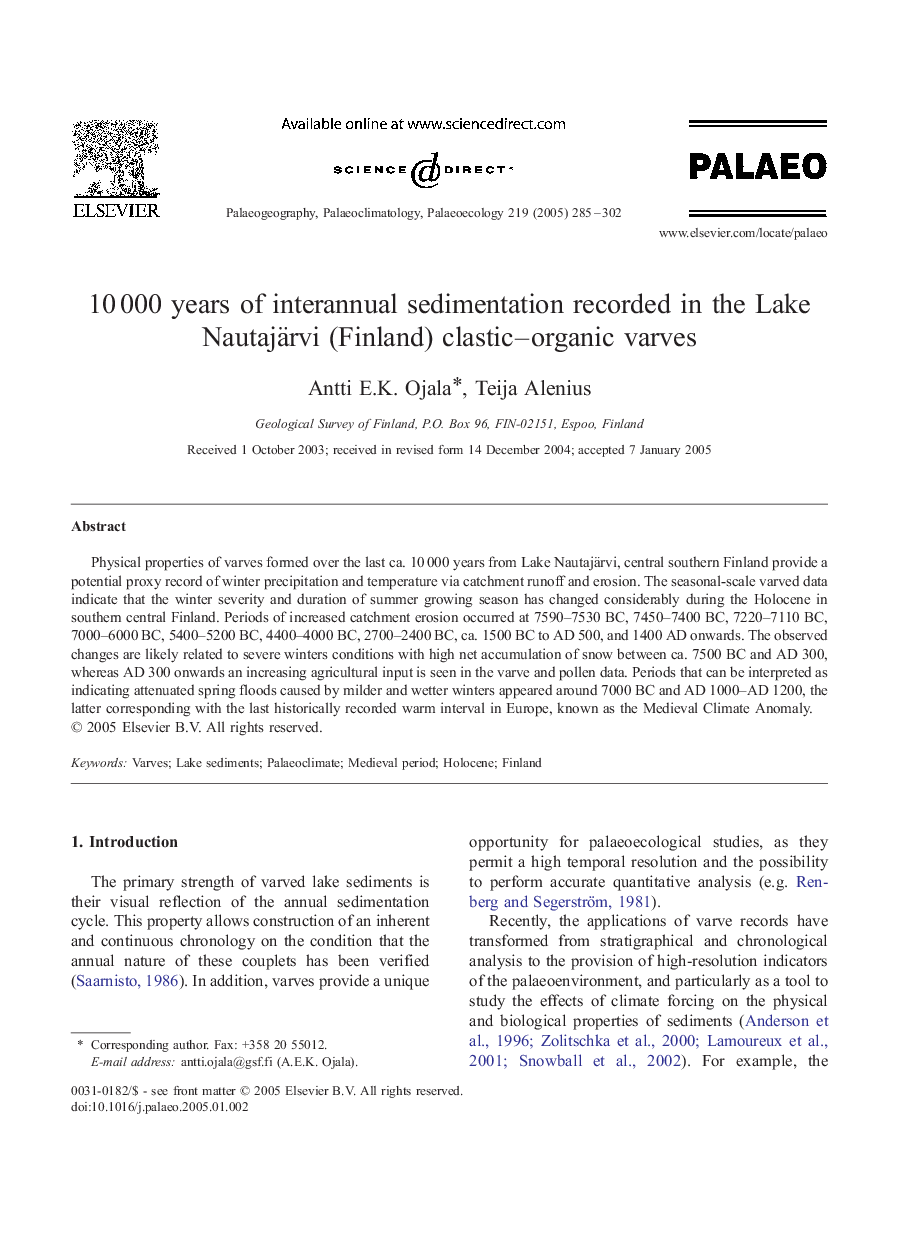| Article ID | Journal | Published Year | Pages | File Type |
|---|---|---|---|---|
| 9463070 | Palaeogeography, Palaeoclimatology, Palaeoecology | 2005 | 18 Pages |
Abstract
Physical properties of varves formed over the last ca. 10Â 000 years from Lake Nautajärvi, central southern Finland provide a potential proxy record of winter precipitation and temperature via catchment runoff and erosion. The seasonal-scale varved data indicate that the winter severity and duration of summer growing season has changed considerably during the Holocene in southern central Finland. Periods of increased catchment erosion occurred at 7590-7530 BC, 7450-7400 BC, 7220-7110 BC, 7000-6000 BC, 5400-5200 BC, 4400-4000 BC, 2700-2400 BC, ca. 1500 BC to AD 500, and 1400 AD onwards. The observed changes are likely related to severe winters conditions with high net accumulation of snow between ca. 7500 BC and AD 300, whereas AD 300 onwards an increasing agricultural input is seen in the varve and pollen data. Periods that can be interpreted as indicating attenuated spring floods caused by milder and wetter winters appeared around 7000 BC and AD 1000-AD 1200, the latter corresponding with the last historically recorded warm interval in Europe, known as the Medieval Climate Anomaly.
Related Topics
Physical Sciences and Engineering
Earth and Planetary Sciences
Earth-Surface Processes
Authors
Antti E.K. Ojala, Teija Alenius,
